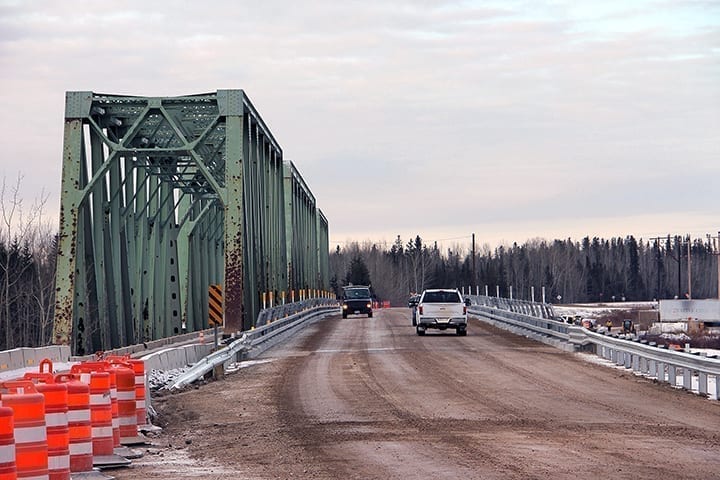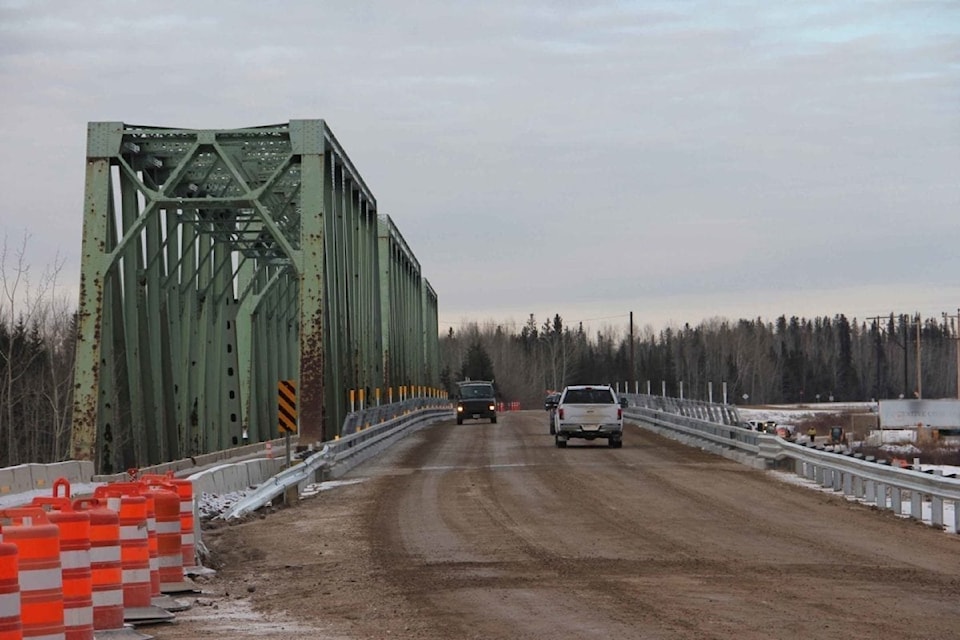A process will soon begin to name the new bridge across the Hay River.
The Department of Infrastructure has received a request from K'atlodeeche First Nation (KFN) about naming the new bridge, which opened earlier this month.
"There has been a suggestion from the K'atlodeeche First Nation to give the river crossing its traditional name," said Ann Kulmatycki, the manager of the structures section (bridges) with Infrastructure.

Paul Bickford/NNSL photo
Kulmatycki said the traditional name would be Kátł’odeh, which in the South Slavey language means 'hay river' or 'grassy river'.
The GNWT has a formal process to select and change the names of geographical places.
"We'll need letters of support from MLAs and other groups with an interest in it," said Kulmatycki. "We'll submit the forms and see where it goes."
The former span over the river was known locally as the Pine Point Bridge, and more officially called the Hay River to Pine Point Bridge by the GNWT.
However, Kulmatycki noted that Pine Point doesn't exist as a community anymore.
"So it makes sense to do this," she said of a name change.
KFN Chief April Martel said it is exciting that the new bridge may be named Kátł’odeh.
"That bridge should have been named Kátł’odeh in the first place because it's on a traditional area," said Martel.
Construction of the new bridge began in October of last year and it opened on Nov. 6.
"The contract opening date was Oct. 30," said Kulmatycki. "So they're actually a few days late. Nothing of any big consequence."
The $12.5-million project is on budget.
Some work remains to be done on the new bridge, including site reclamation through grading and hydroseeding, concrete repairs on the piers, erosion and sediment control, chip sealing the approaches, removal of the last bits of formwork, general clean-up and demobilization.
Kulmatycki said the remaining work will be completed in the spring or early summer, and will not mean any additional cost for the project.
With regular maintenance, the bridge is designed to last 75 years or more.
The new bridge features an open deck, meaning there are no overhead restrictions for vehicles, which was the case with the old truss bridge.
Highway 5 was never closed during construction as traffic was diverted early this year onto an adjacent railway bridge.
The old railway bridge will remain in place.
"It's still in OK shape," said Kulmatycki. "The railway is gone. Should a railway ever come back, conveniently it would still be there."
The GNWT official noted it would cost a significant amount to remove the railway bridge.
